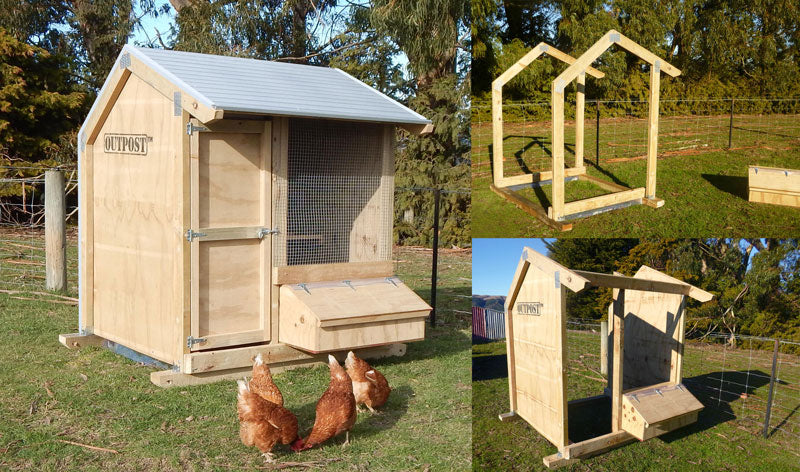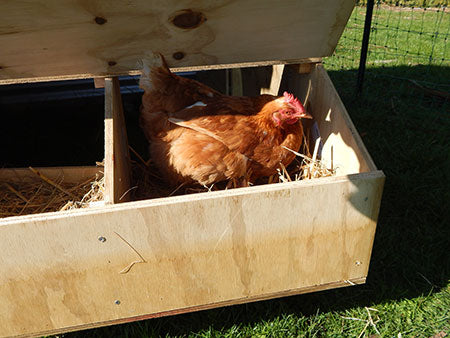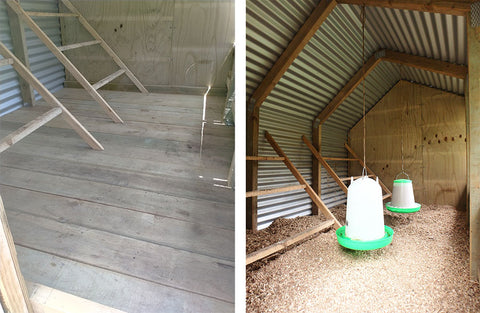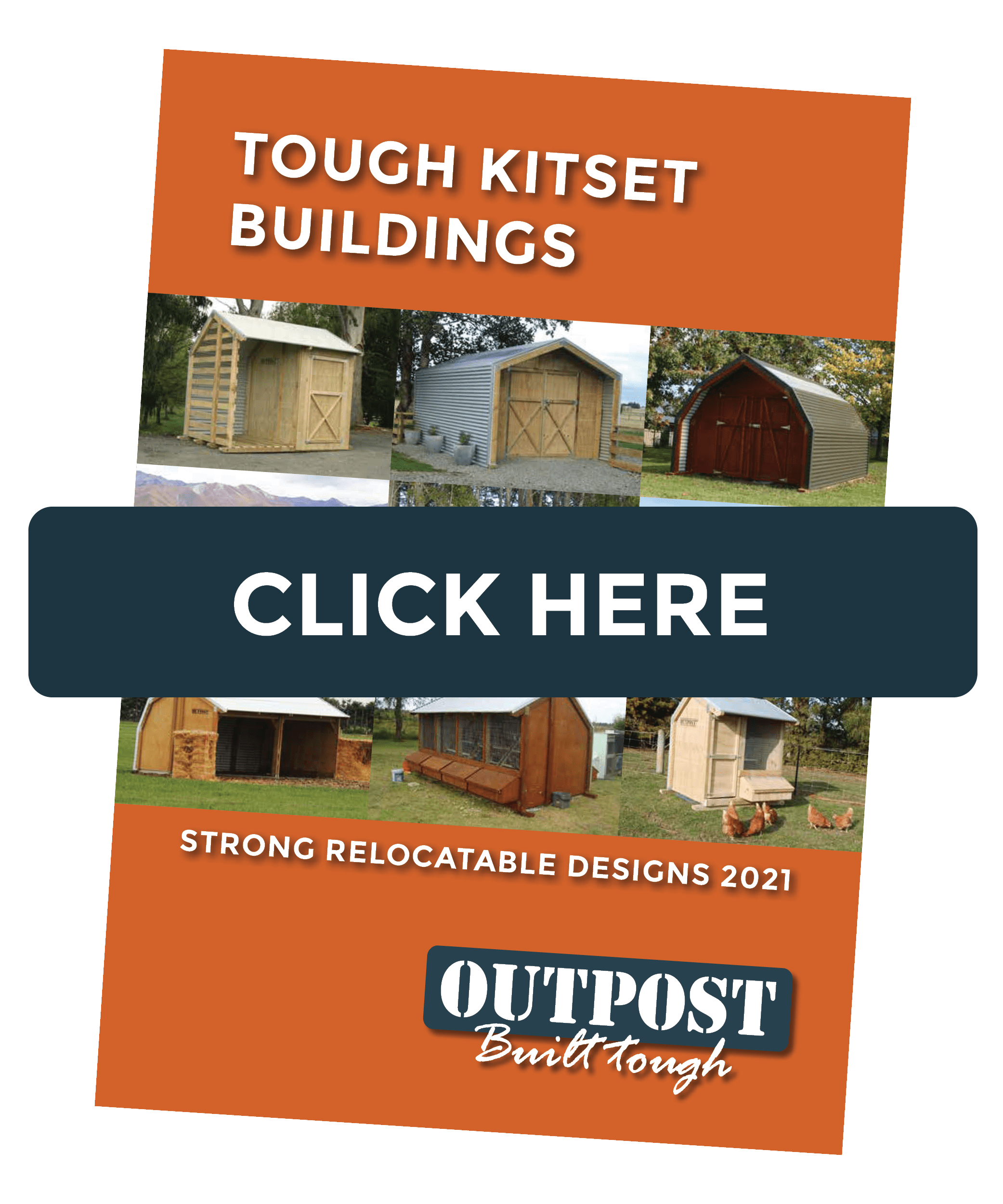The goal of building a chicken coop is to protect your flock from predators, the elements and disease while giving them a safe, warm and dark place to nest and lay eggs. It goes without saying that happy chickens lay the healthiest eggs.
To build a chicken coop you’ll need to consider the size, how many chickens you need to house, the materials you’re going to use, the best location for your coop, the tools you’ll need to build it and the comforts you need to provide your chooks inside your coop.
Given the chance, we have plenty of predators in New Zealand who would enjoy a chicken feast, and we’re lucky enough to enjoy temperatures across all four seasons so let’s build a sturdy, comfortable shelter to provide the finest egg laying territory for your chooks.

How to build a chicken coop
First of all, we’re pleased to see you decided to do your research before you rushed off to build your chicken coop. There are some important aspects to consider before you grab your tools, some that may not have crossed your mind.
Coop size
The number of chickens you decide to raise will greatly affect the design of your chicken coop. Remember, your chicks will only get bigger. Will your coop include a chicken run or will they be free-range in the garden during the day?
Different breeds of chickens will have different spatial requirements - when you purchase your chickens ask the breeder how much space they will need in their chicken coop. Thankfully, our chicken coops and hen houses are already measured for optimal space requirements per hen. We did the calculations so you don’t have to.
Here is our most popular 1 bay hen house suitable for up to 12 free ranging hens and our large chicken coop suitable for up to 100 free ranging hens.
Check with Council
You don’t want to give up your new feathered friends once you have them settled in. Although generally chicken coops do not require planning permission, there may be specific requirements in your area regarding keeping chickens, how to care for them and rules on chicken coop construction. Make sure to check in with your local council for any rules before buying or building a coop. Don’t worry, we’ve outlined some of the requirements in our blog about Keeping Chickens in NZ.
GET A FREE COPY OF OUR CATALOGUE
Consider kitsets
Have you weighed up the pros and cons of building versus buying a chicken coop? Building from scratch may be the more adventurous option but we have already done the hard work to eliminate the hurdles (and the time spent) you’ll likely encounter along the way. Check out our easy to install chicken coops and hen houses designed specifically for New Zealand conditions.
Take a look at this video showing an Outpost 2 Bay Chicken Coop being assembled.
Where should I put my chicken coop?
Location, location, location. This is key to your hens comfort throughout the vast NZ seasons. The location of your chicken coop can have diverse effects on the health and hygiene of your flock.
- Sunlight inspires egg laying but they’ll also want to beat the heat when it gets too hot so somewhere partially shaded and partially in the sun is the perfect solution.
- Consider building your coop on higher ground to avoid flooding, build up of moisture and any mud issues.
- Keep your neighbours sweet by positioning your chicken coop away from any boundaries, especially if they’re within hearing distance.
- Take note of any harsh wind directions and place ventilation in opposing directions.
- A high traffic area and away from large foliage will discourage predators from stumbling upon your flock.
If you don’t have the option of building on high ground you may consider building an elevated coop to keep your birds dry. An elevated chicken coop with enough space underneath provides extra room to run around. You have already extended the size of your chicken run with space you already have, while giving them shelter from the heat and rain.
The location of your coop could be the difference between happy or grumpy chickens but fear not, if you have the space chances are you’ll have the ability to relocate your coop if it’s not working out for you or your hens.

What will I need for a chicken coop?
Maybe you’ve adopted the wise route of purchasing one of our kitset chicken coops for an easy life or you’ve decided to dive head first into chicken coop building territory. Whatever your decision, let’s take a look at the five core elements of your chicken coop:
Structure - the ultimate protective element for your flock
You’re going to need durable materials for the outer shell of your chicken coop, it’s going to be exposed to all of the elements so your chickens don’t have to be. Treated timber such as our locally sourced New Zealand pine or a naturally rot resistant wood such as cedar or redwood will be ideal for creating the wall structure of your coop.
You’ll also need some kind of ventilation in the main structure of your coop but you don’t want direct harsh winds flying through and spreading a chill in the cooler months. A wire mesh panel on one side or in the eves of your coop will keep the airflow steady. An overhanging corrugated iron roof will help keep your hens dry and extend the longevity of your structure.
Make sure all large openings are covered with some wire and any small openings are blocked or covered. Any gaps and holes could be opportunities such as rats or other small rodents to work their way inside.

Nesting boxes - for eggcellent egg laying ability
Inside your coop you’ll need some nesting boxes and roosting bars. Chickens naturally seek out a secluded, concealed space, with good visibility for nesting. Raise some boxes - with three sides and a roof - a few inches above the ground and line them with some comfortable bedding, such as pine wood shavings, hay, straw or recycled shredded newspaper.
The perks of a self build is you can get creative when making your nesting boxes and you’ll likely need several. Try milk crates, old shelving or wine boxes to make great nesting options when fitted out correctly.
Ideally, build your nesting boxes thirty centimetres squared and around forty five centimetres high for medium sized laying hens. The more private they are, the more likely they’ll use them. Make sure to regularly change their bedding to keep it clean, dry and free of parasites.
Roosting bars - for naps and chats
Before chickens became our pets, they would perch on branches at night to avoid predators while they rested. You’ll need to include some roosting bars (or perches) within your coop to give them a place to sleep and rest. Some smaller and lower perches will encourage this instinct in younger chicks too.
Remember that chickens that nest on the ground are more prone to disease and parasites. Preferably, your roosting bars will be twenty to thirty centimetres long for a medium sized bird or more if they are larger and about 45 centimetres apart from each other. If your roosts are too close to the ceiling you may discover your chickens head butting it when they fly up to roost. Avoid PVC plastic as this can be too slippery for sleeping on.
Chicken run - to run free and be chicken-y
It’s so important to provide your chickens a place to venture outside and room to run around at least for a few hours of the day. When deciding on the details of your chicken run consider your space, the predators that are a risk to your chickens and how many birds you have. The more space you can provide for your chickens the happier they’ll be but at least one square meter of outdoor space per chicken is ideal.
Your options for a chicken run include:
- Free-range - to let your chickens run fancy free with no fear of predators.
- Pastured - a protected and enclosed area such as a garden that they can run free in.
- Enclosed run - the safest option for urban areas or away from predator

Flooring - for bathing, chilling and keeping predators at bay
When deciding which floor is best for your chicken coop, take into consideration how easy it is to clean, how it will affect the temperature and comfort of your chickens, whether predators can penetrate it, whether it will be easy to relocate and how durable it will be in the long run. There are many options for flooring in your chicken coop:
- Concrete - extremely durable and prevents burrowing rodents. You’ll need to layer your concrete with thick bedding in the winter because it will get very cold.
- Timber boards - the most common flooring material is strong, insulated and great for relocating. Although it can collect dirt and wood mites in between the cracks.
- Plywood - insulated, safe from predators and easy to clean but won’t last as long as concrete or timber boards.
- Dirt or grass - the cheapest option; is easy to relocate and poop will fertilise the ground as long as you move it regularly. However it can get muddy and be prone to burrowing predators.
- Wire mesh - not popular in New Zealand due to its lack of insulation but it’s easy to clean and prevents burrowing predators.
Thankfully, we’ve weighed up all the pros and cons of each coop flooring system in our article here: The best flooring materials for your coop.
If you have any additional questions, don’t hesitate to get in touch with one of the team here at Outpost Buildings.





